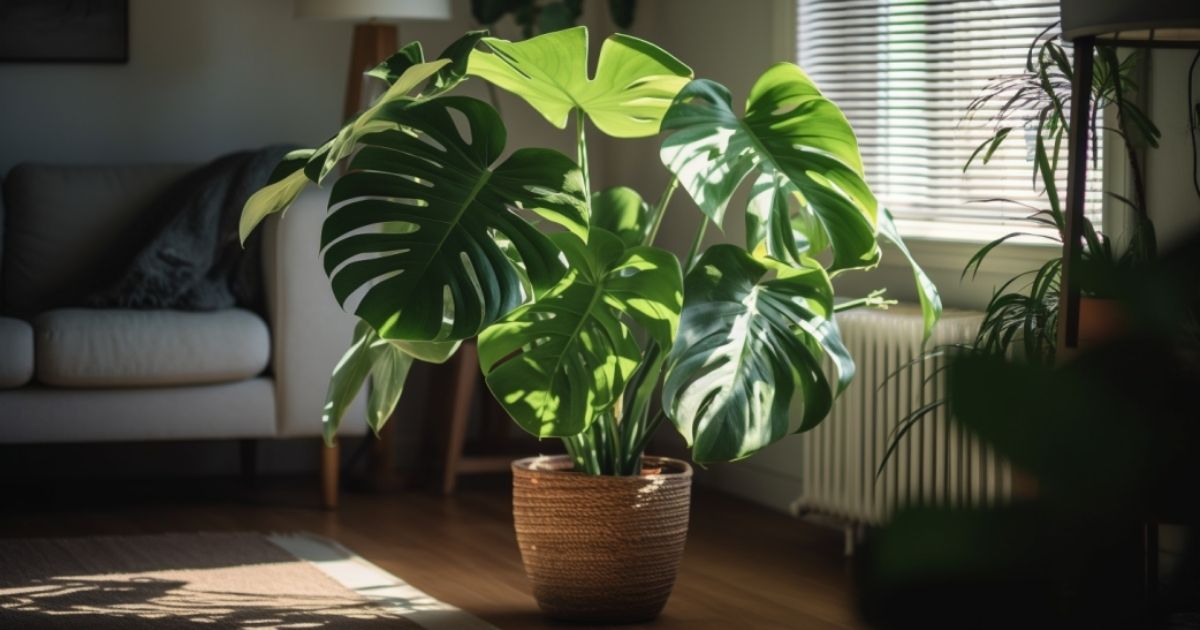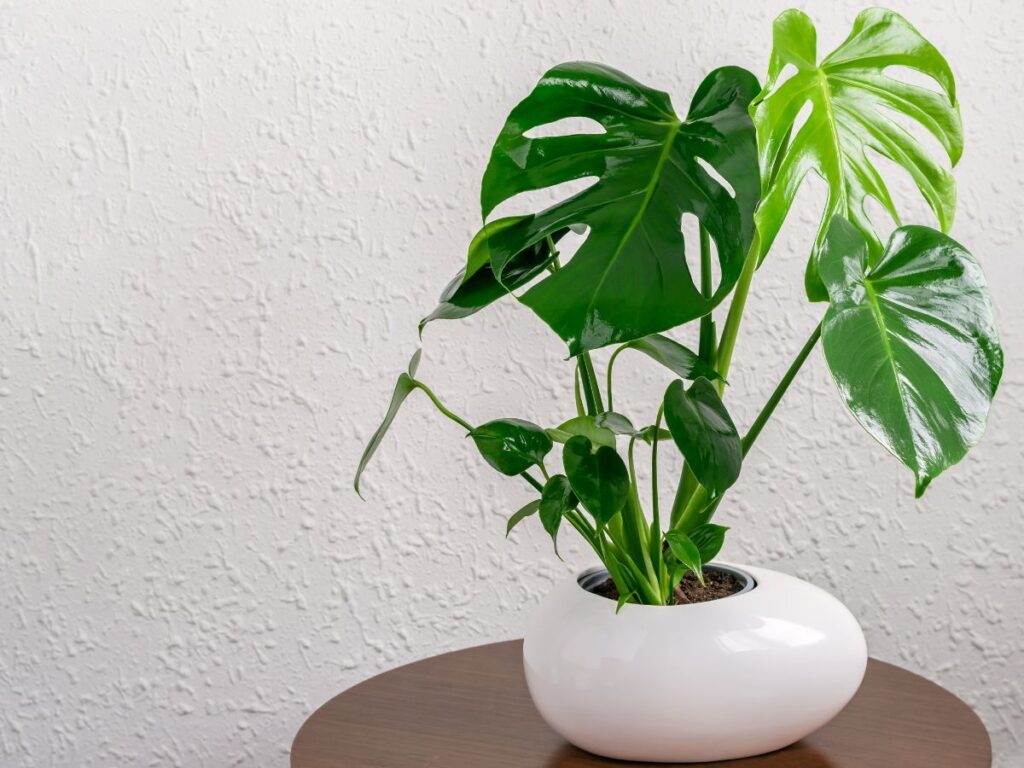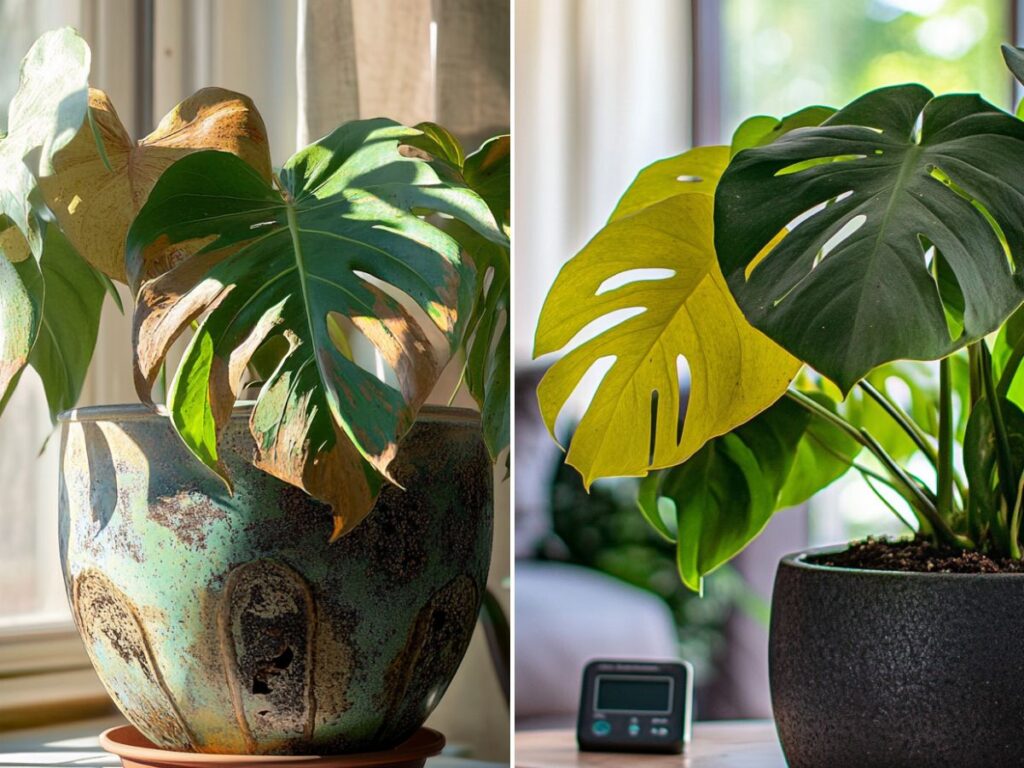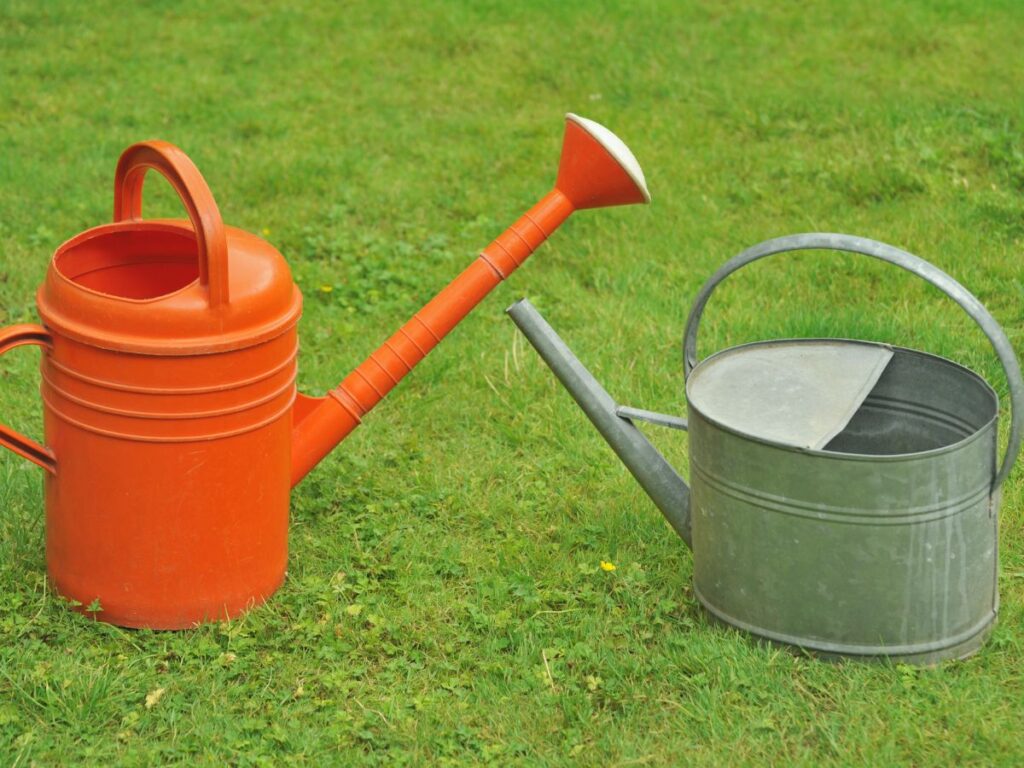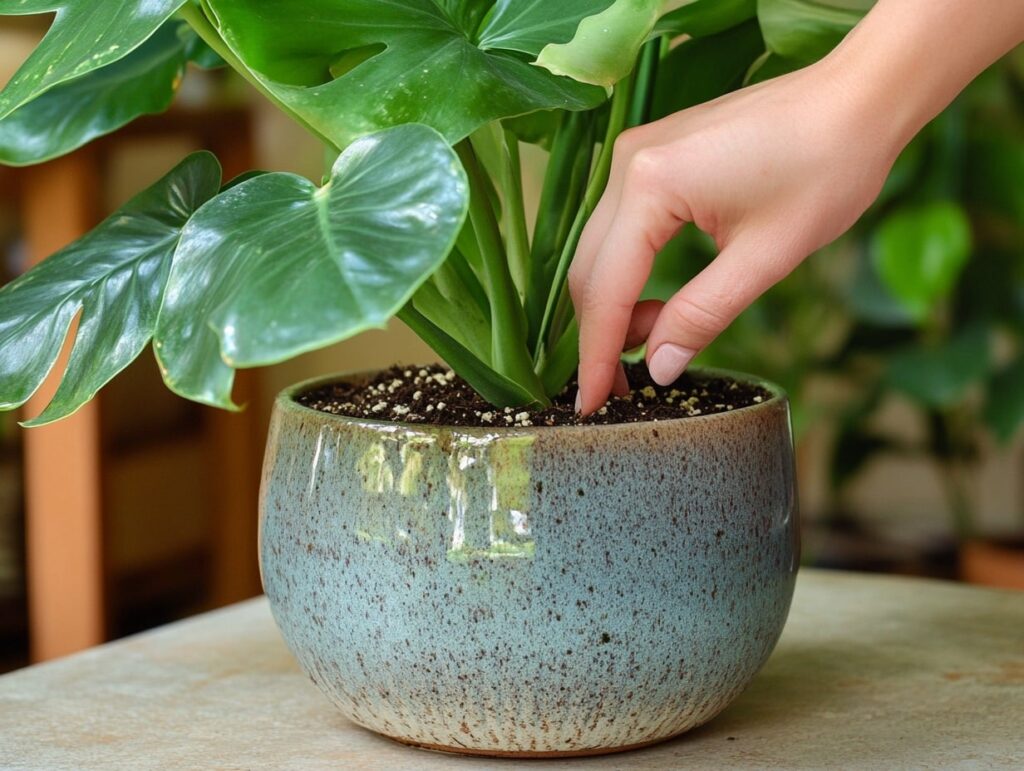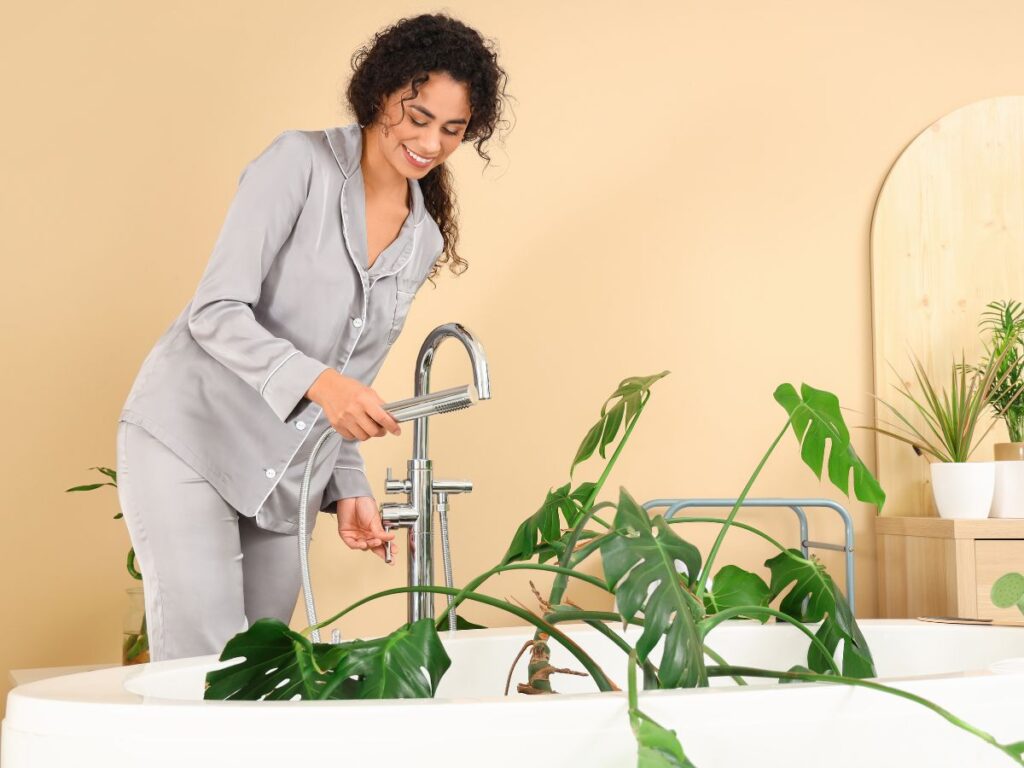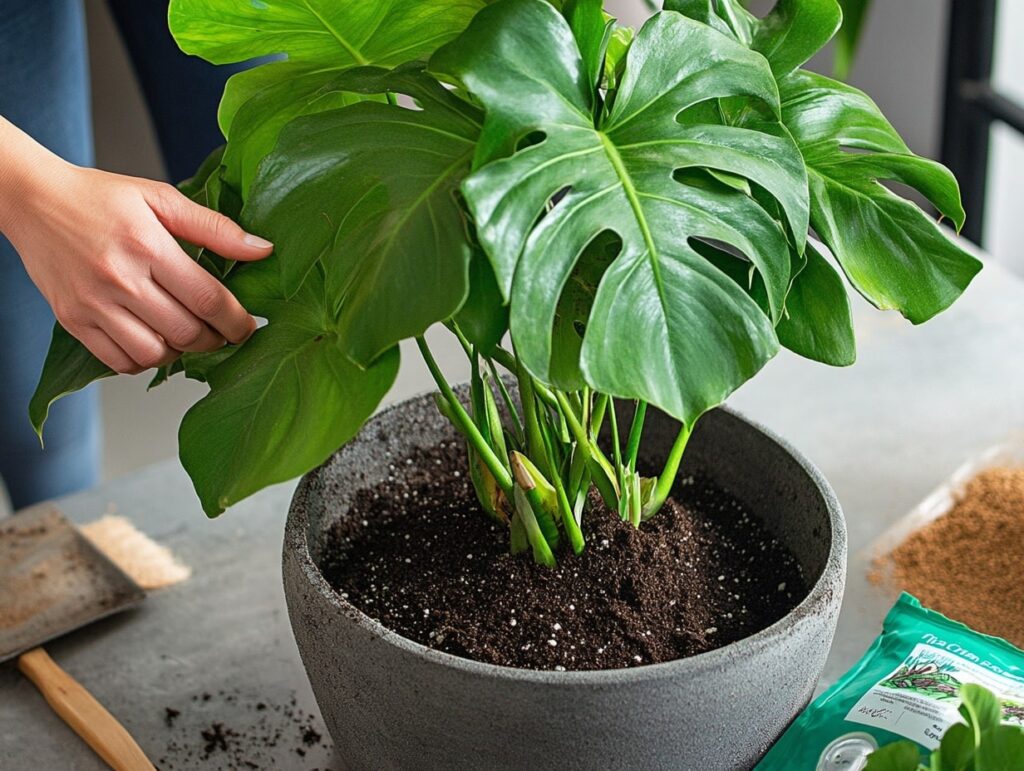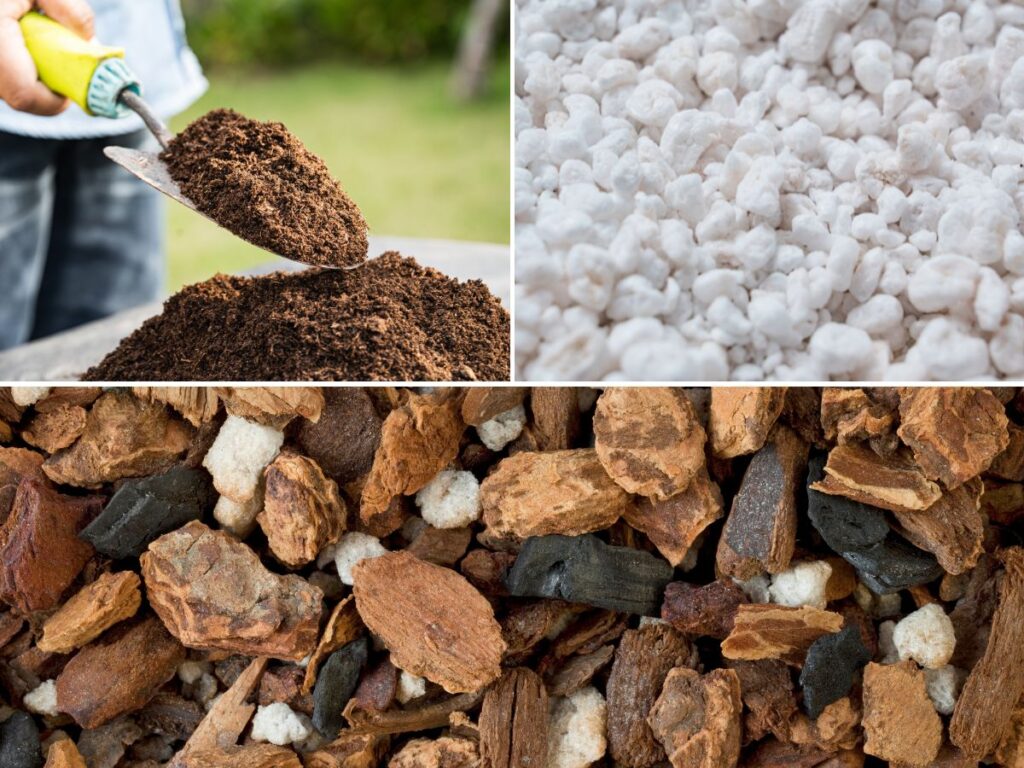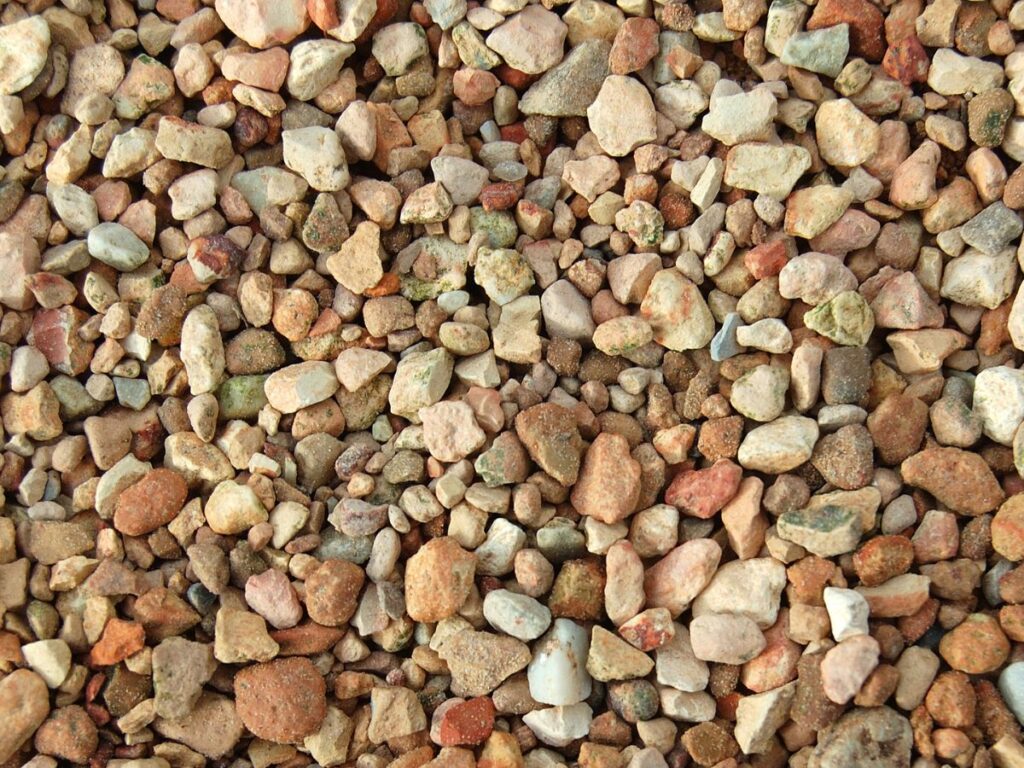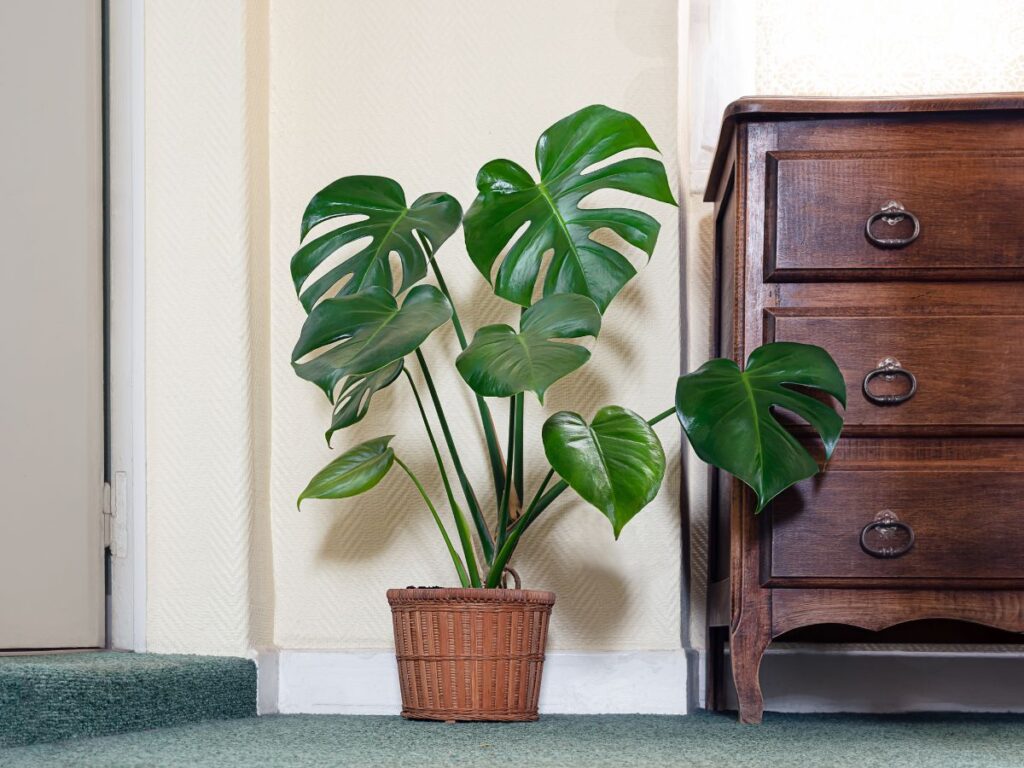Caring for a Monstera plant may seem simple, but getting the watering routine right can be tricky. If you’ve been puzzled about how to properly hydrate this tropical beauty, you’re not alone.
The best method to water Monstera plants is to allow the top inch of soil to dry out before giving them a thorough soaking.
Overwatering can lead to root rot, while underwatering may cause the leaves to curl or brown.
By paying attention to the soil moisture and adjusting your watering schedule accordingly, you can help your Monstera thrive. Keeping a consistent routine will ensure your plant’s health and vibrant growth.
With the right approach, your Monstera can flourish in almost any environment. Explore how this specific watering method benefits your plant’s health and enhances its natural beauty. Dive into the details and become an expert at nurturing your leafy companion.
Understanding Monstera’s Water Requirements
When it comes to watering a Monstera plant, it’s crucial to find the right balance. Keeping a close eye on your plant’s cues and adjusting according to the seasons will help you maintain its health.
Signs of Underwatering and Overwatering
Monsteras can be quite expressive. Underwatered plants might display drooping leaves, brown edges, or wilting. If you notice the soil pulling away from the pot, it’s a clear sign that water is lacking.
Meanwhile, overwatered Monsteras may have yellowing leaves or show symptoms of root rot, like a musty smell. A soggy top layer of soil is another indicator. Consistently monitor soil moisture to strike a good balance.
Seasonal Watering Adjustments
Monstera plants require different watering routines with changing seasons. In spring and summer, these plants grow vigorously and need more frequent watering. Once a week is generally sufficient, but always check the soil moisture first.
During the fall and winter, growth slows, and watering can be reduced. Watering every two weeks is often enough. Temperature and humidity levels in your home also affect your Monstera’s water needs, so adjust accordingly.
Essential Watering Tools for Monstera
Proper watering tools play an important role in the health of your Monstera. Using the right watering can and moisture meter ensures efficient care and helps prevent overwatering or underwatering.
Choosing the Right Watering Can
A suitable watering can helps deliver the right amount of water. Choose one with a long, narrow spout for precision watering.
This design allows you to reach the base of the plant easily. Opt for a can with a capacity around 1-2 liters to help maintain control over water flow.
Material matters too. Plastic cans are lightweight, while metal cans offer durability. Consider what suits your preference.
Look for a can with a comfortable handle to make watering a pleasant task. This small detail can make a big difference in how much you enjoy caring for your plant.
The Use of Moisture Meters
Moisture meters are invaluable for checking soil moisture levels. They help avoid the guesswork associated with watering by giving real-time data. Insert the probe into the soil, and within seconds, you’ll know if your Monstera needs water.
Different moisture meters come with varied features. Some are basic, showing simple readings like “dry,” “moist,” and “wet,” while others offer digital displays with precise moisture percentages.
When choosing a meter, consider the ease of reading and the length of the probe, ensuring it reaches root depth. This tool helps promote healthy growth by preventing both over and underwatering.
The Watering Process
Caring for your Monstera plant begins with mastering the right watering technique. Knowing when and how often to water is just as crucial as the steps themselves.
Step-by-Step Watering Technique
Begin by checking the soil moisture with your finger or a moisture meter. Aim for soil that feels dry about 2-3 inches below the surface.
When it’s time to water, take the plant from its usual spot to the sink or bathroom. Ensure the pot has drainage holes to prevent waterlogging. Pour water evenly over the soil until it drains from the bottom. This helps flush out any accumulated salts.
Ensure excess water drains completely. Before returning your plant, let it sit for a few minutes to drain. Avoid letting the pot sit in standing water to prevent root rot. Remember to water less during winter when Monstera tends to use less water.
Frequency and Timing Best Practices
Watering frequency depends on various factors, such as the season, humidity, and soil type. Typically, watering every 1-2 weeks suffices for Monstera.
Always adjust based on your plant’s needs. During warmer months, the plant might need more frequent watering. In contrast, cooler months require less frequent watering.
Morning is the best time to water, allowing the foliage to dry during the day. Always ensure water temperature is lukewarm, as cold water can shock the roots. Maintain consistency in your watering routine to promote healthy growth.
Soil and Drainage Considerations
Choosing the right soil mix and ensuring proper drainage are essential for healthy Monstera growth. These elements play a crucial role in preventing root rot and promoting vibrant foliage.
Selecting the Ideal Soil Mix
When picking soil for your Monstera, look for a mix that balances moisture and aeration. An aroid mix, typically composed of peat moss, perlite, and orchid bark, is ideal. This combination retains moisture while allowing plenty of airflow to the roots.
Consider creating a custom mix:
- 1 part peat moss
- 1 part perlite
- 1 part orchid bark
This ensures that your plant gets the right nutrients and retains proper moisture levels. An important factor to avoid is heavy, dense soil, which can lead to waterlogging and root problems.
Remember, Monstera plants prefer slightly acidic to neutral pH levels, around 5.5 to 7.
Ensuring Proper Drainage
Proper drainage is vital for your Monstera’s health. Always use pots with drainage holes to allow excess water to escape. Without these, water accumulates and can lead to root rot, significantly harming your plant.
Tips for better drainage:
- Choose a pot with multiple drainage holes
- Use a layer of gravel at the bottom of the pot to enhance water flow
Avoid using decorative pots without drainage unless they’re used as a cover for a more practical inner pot. Also, water your Monstera only when the top 1-2 inches of soil feels dry to the touch. This prevents overwatering and keeps your plant thriving.
Monstera Watering Mistakes to Avoid
Watering your Monstera too frequently can lead to root rot. Check the soil’s moisture level before watering. Your plant prefers drying out a bit between waterings.
Avoid using cold water. Room temperature water is best for Monsteras. Cold water can shock their roots.
Overwatering is a common pitfall. Ensure that the top 1-2 inches of soil dry out before your next watering. This helps prevent soggy roots.
Neglecting to adjust your watering schedule for different seasons can harm your plant. During winter months, your Monstera will need less frequent watering than it does in summer.
Improper drainage is a big no-no. Make sure your pot has drainage holes to allow excess water to escape. This helps avoid water pooling at the roots.
Using hard water can lead to mineral buildup in the soil, which Monsteras don’t like. Consider using filtered or rainwater to avoid this problem.
Don’t water on a strict schedule such as every Tuesday. Instead, listen to your plant’s needs and adjust accordingly. This flexibility ensures your Monstera gets the care it requires.
Finally, ignoring the signs of distress, such as yellowing leaves, might mean changing your watering habits. Always be observant and willing to tweak your approach to suit your Monstera’s needs.
Bringing a Monstera into your home is an invitation to engage with nature on an intimate level. Watering it properly is not about adhering to a strict set of rules but about cultivating an awareness of its needs and responding with care.
In a world that often prioritizes efficiency and convenience, taking the time to understand and nurture a plant can be a radical act. It reminds us that not everything can or should be optimized for speed.
Some things, like the growth of a leaf or the unfolding of a fenestration, happen in their own time.
So, the next time you approach your Monstera with watering can in hand, pause for a moment.
Feel the soil, observe the leaves, and consider the environment. In that simple act, you engage in a practice that nourishes not just the plant but your own capacity for attention and compassion.
